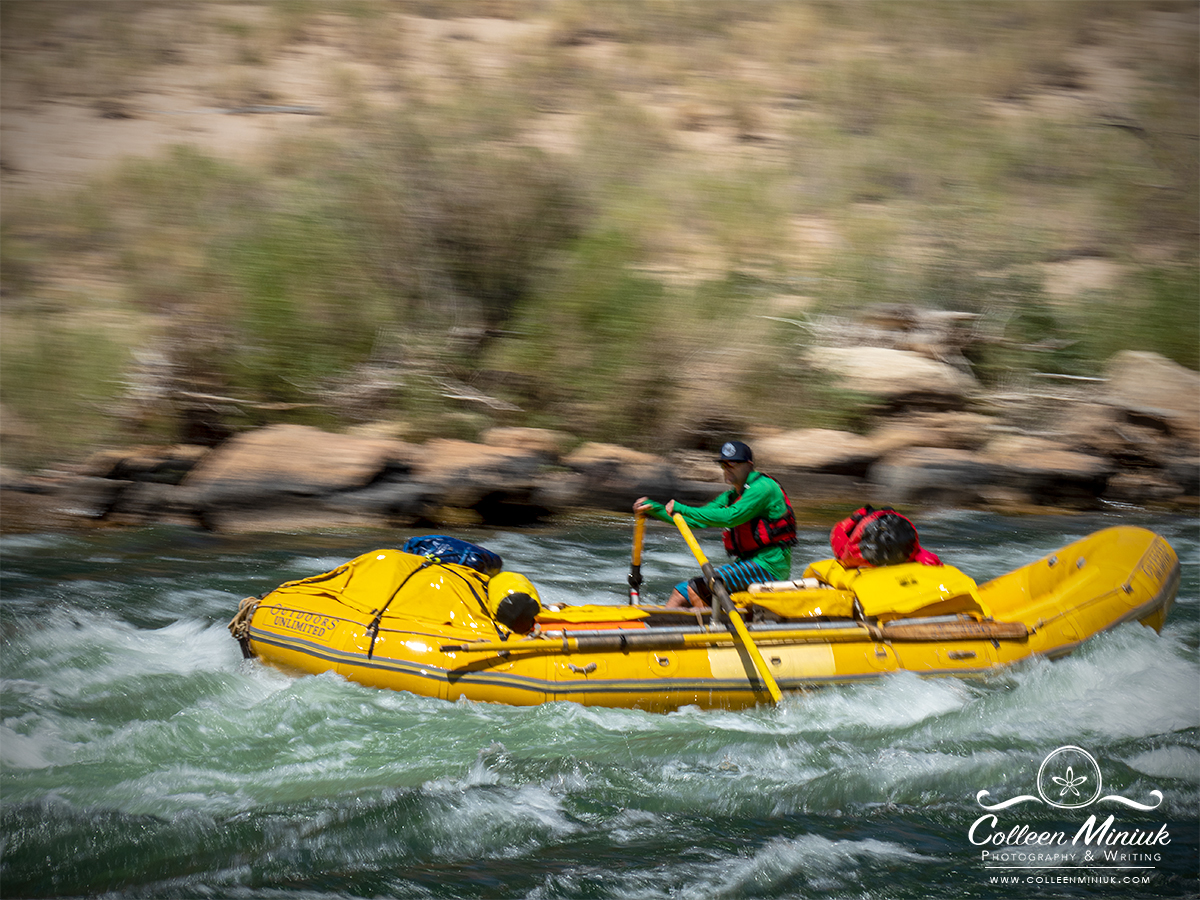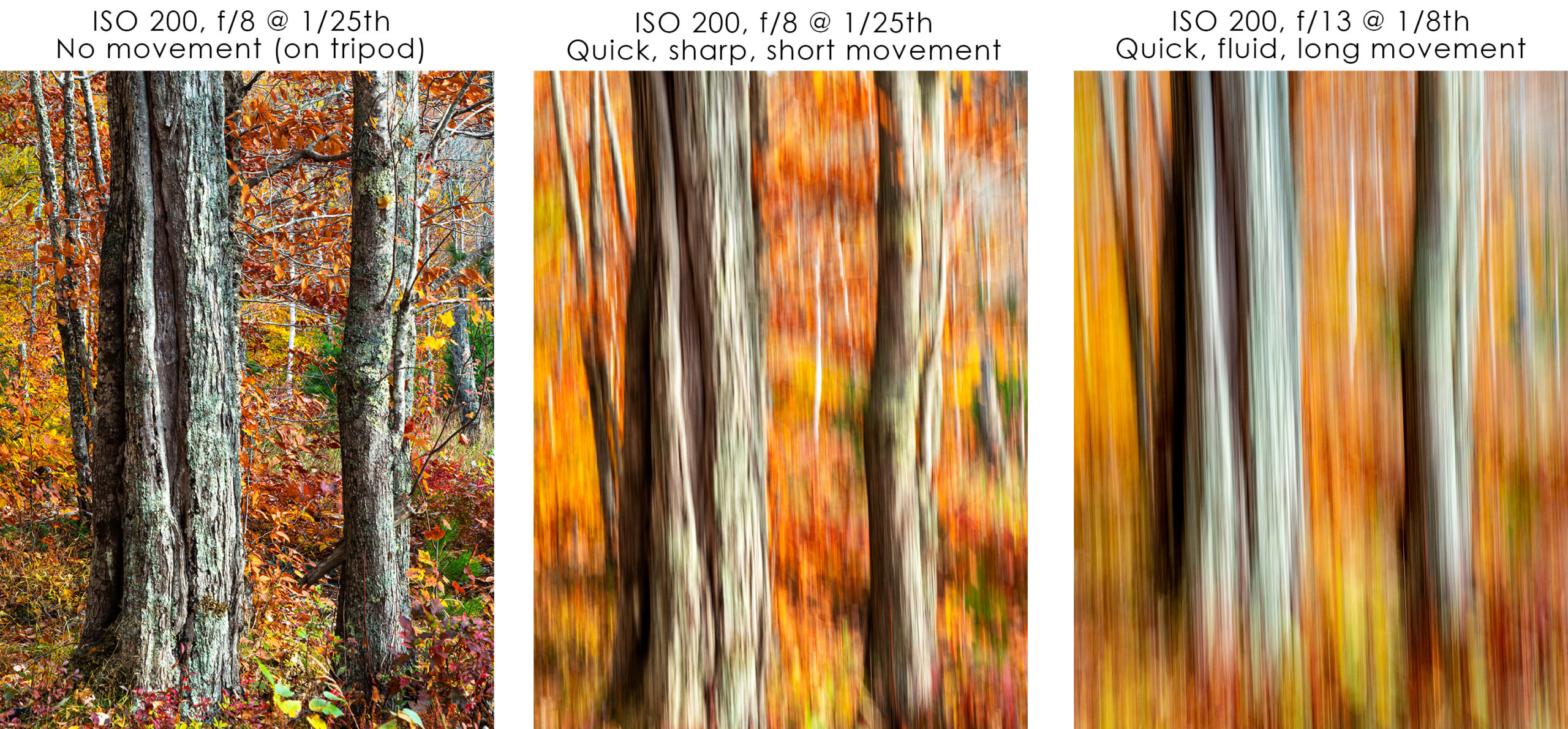Movin’ and Shakin’

Dear Bubbles:
In one of your earlier posts, you suggested you “switched into Intentional Camera Movement mode.” What is that? Is that an option on my camera? If so, where would I find it?
~Ashley
Dear Ashley:
I’m sorry. I’ve unintentionally led you astray. That is, in fact, exactly what I said in my “Seeds of Inspiration” article. I was referring to the mode in my brain, though, not my camera.
Intentional camera movement (or ICM for short) is an activity that entails moving the camera during the exposure on purpose for effect. You can achieve it with any camera, but especially with ones that allow you to slow your shutter speed. It transforms an otherwise static scene into a more abstract, impressionistic one with a sense of movement.
There are a few different styles of ICM, specifically:
- Panning: Moving the camera horizontally while following a moving object such that the subject remains in focus and the background appears blurred.

- Straight-line movement: Moving the camera horizontally or vertically while photographing a static or moving scene with the intent of creating a more impressionistic, abstract photograph where not much, if anything, is in focus. My buddy and fellow photographer Tony Sweet appropriately calls these “swipes.”

- Zooms or zoom pulls: Turning the barrel of a zoom lens (i.e. change the focal length) while photographing a static or moving scene. The center of the photograph typically remains in sharp focus while the rest appears as a radial blur.

To give ICM a try:
- Remove your camera from your tripod. Yes, you read that right. A tripod will restrict your motion, and you want freedom to move during the exposure.. (I can hear you rejoicing…).
- Find a composition with contrast in tones and/or colors shapes with some shape and structure. Trees are a popular subject, because they create tidy and strong lines, but you can use these techniques with literally any scene or subject.
- Set a slower ISO like ISO 100-200. Aim for a shutter speed in between 1/20th and 0.5 sec. I like in between 1/4th and 1/8th of a second but as you can see from the photos in this post, that can very. The faster your shutter, the faster you’ll need to move during the exposure. Your aperture is irrelevant. Nothing will be in focus anyhow, so use any aperture that will get you to that slower range of shutter speeds.
- If it’s bright outside, you might need to add a polarizer or a neutral density filter to your lens to help slow your shutter speed.
- Start moving the camera before you snap the shutter. Snap the shutter. Continue moving until after the exposure is over.
- Check your histogram for exposure. Check your LCD to see if you like the results. Lather, rinse, and repeat!

Different directions and speeds of your movement will change the effect and render different results so experiment! Try moving vertically from top to bottom or bottom to top. Or horizontally from side to side. Or on a diagonal. Or in a circle. Or “write” invisible letters. Or spin the camera. Or turn the barrel of your zoom lens (i.e. a zoom pull). Or trace the outlines of a shape or follow the movement of an object (i.e. panning). Or shake your camera from side to side, shake it all about. (“You do the hokey pokey and you turn yourself around. That’s what it’s all about it!”) Go fast! Go slow! Do whatever motion you feel like.
Even if you do your best to replicate the ones prior, every frame will turn out different—which makes this technique all sorts of fun. The great part of ICM is that there is no right or wrong answers. Anything goes! Play to your hearts content.
Be well, be wild,
~Bubbles
Have a question about photography, art, and/or the creative life? Need some advice? Looking for inspiration? Send your question to Dear Bubbles at [email protected] to be possibly featured in a future column post. (If you’d prefer a different display name than your real first name, please include your preferred nickname in your note.)





One Comment
James Rodewald
Such a great subject to address and so nicely done, Colleen. Like you I am confident other readers will find ICM techniques a bit liberating when more traditional compositions may not be coming to mind or when you feel like you need a dose of creativity. Possibly even when you get that feeling like the composition or subject is overshot.
There is a whole range of other techniques to try, so have fun with it! Who knows, maybe it will lead you down a whole new creative pathway. I have been enjoying experimenting this Autumn with shutter speeds between 1 and 2 seconds which afford me with more time to trace lines. Certainly don’t fret over apertures of f20 or f22 if it gives you the speed you want, distortion at those settings will not be apparent.
Best to everyone.